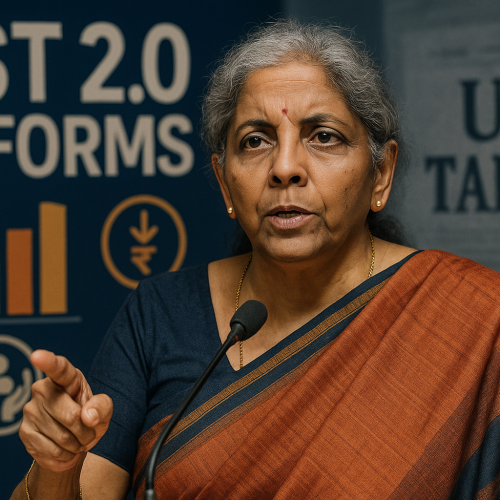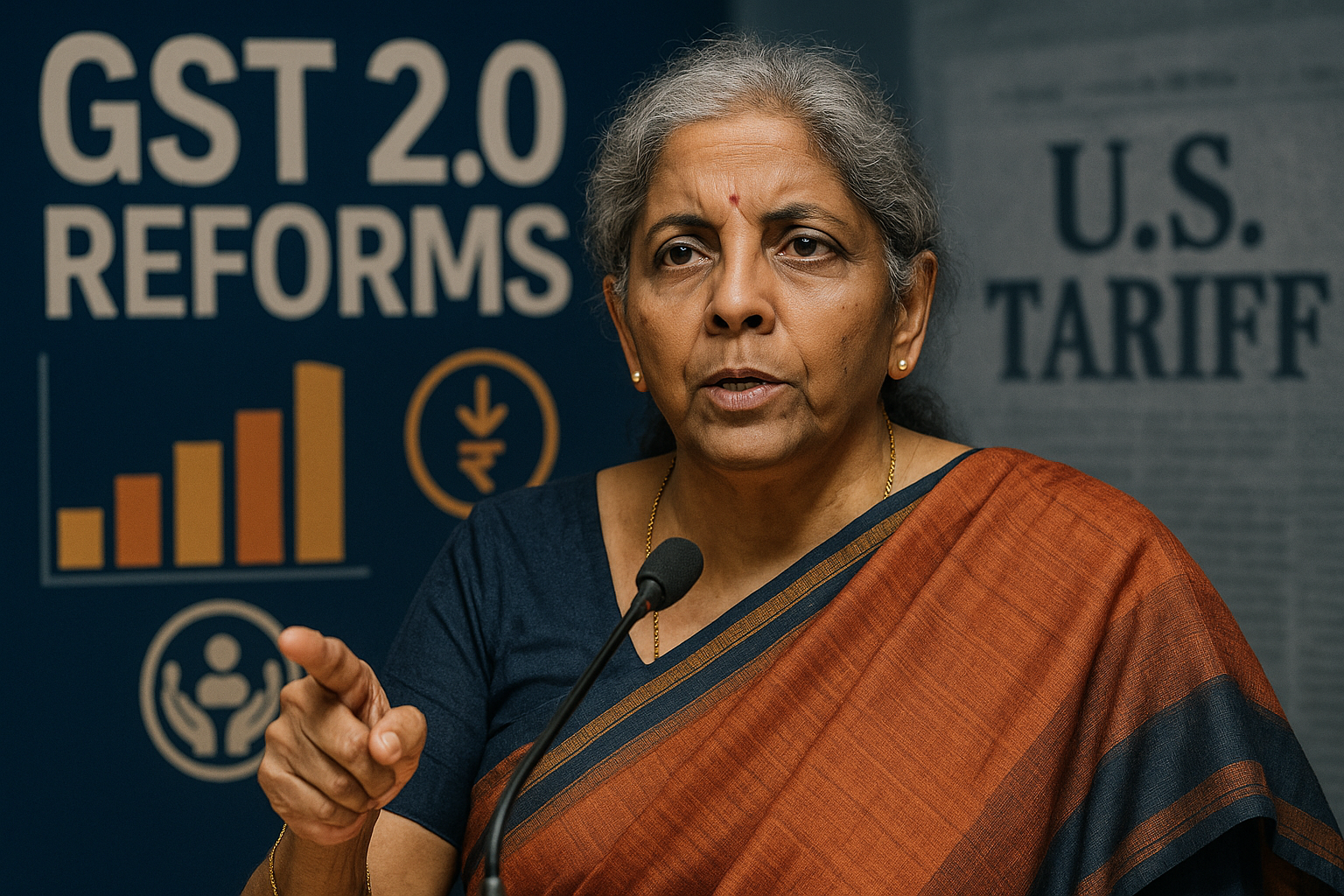Finance Minister Nirmala Sitharaman chaired three separate high-level meetings to review the preparedness of the Goods and Services Tax Network (GSTN) for the rollout of GST 2.0. The meetings, held over the past week, focused on ensuring technological readiness, smooth taxpayer transition, and state-level coordination.
The review underscores the government’s intent to make GST 2.0 not just a tax reform, but a seamless digital-first system that minimizes disputes and enhances compliance efficiency.
Core Development
The Finance Minister’s meetings involved officials from the GST Council, CBIC, and state finance departments. The agenda covered:
Technology Readiness: Testing IT infrastructure for handling new slabs and rate rationalization.
Taxpayer Services: Ensuring clarity through FAQs, helpdesks, and user-friendly portals.
State Coordination: Aligning state tax systems with GSTN for uniform implementation.
GSTN, the backbone of India’s indirect tax system, is under pressure to deliver a smooth migration for businesses and taxpayers when GST 2.0 goes live.
Key Drivers Behind the Review
Complex Transition: Moving to simplified slabs requires robust IT and compliance support.
Consumer Confidence: Smooth rollout avoids disruption for businesses and households.
State Integration: Uniform adoption across states is critical for reform credibility.
Stakeholder Impact
Businesses: Clarity on portal updates and compliance processes is vital.
Tax Authorities: Enhanced tools for monitoring, reporting, and enforcement.
Consumers: Indirect benefits through reduced disputes and transparent pricing.
Industry & Policy Reactions
Experts noted that focusing on GSTN preparedness reflects lessons from the original GST launch in 2017, which saw technical glitches. Industry bodies welcomed the move, calling it essential for making GST 2.0 a trustworthy and efficient reform.
Challenges Ahead
System Overload Risks: High volumes of filings may stress infrastructure.
Training & Awareness: Businesses, especially MSMEs, need guidance on the transition.
Monitoring Rollout: Ensuring uniform, glitch-free adoption across states.
Strategic Outlook
The Finance Minister’s proactive engagement signals the government’s determination to ensure GST 2.0 begins on a strong footing. By emphasizing digital preparedness and stakeholder alignment, GST 2.0 could deliver on its promise of simplicity, transparency, and compliance ease.
Why This Matters
GSTN is the backbone of India’s indirect tax system. Ensuring its readiness is essential for smooth reform implementation, taxpayer trust, and India’s credibility in executing large-scale economic transitions.












